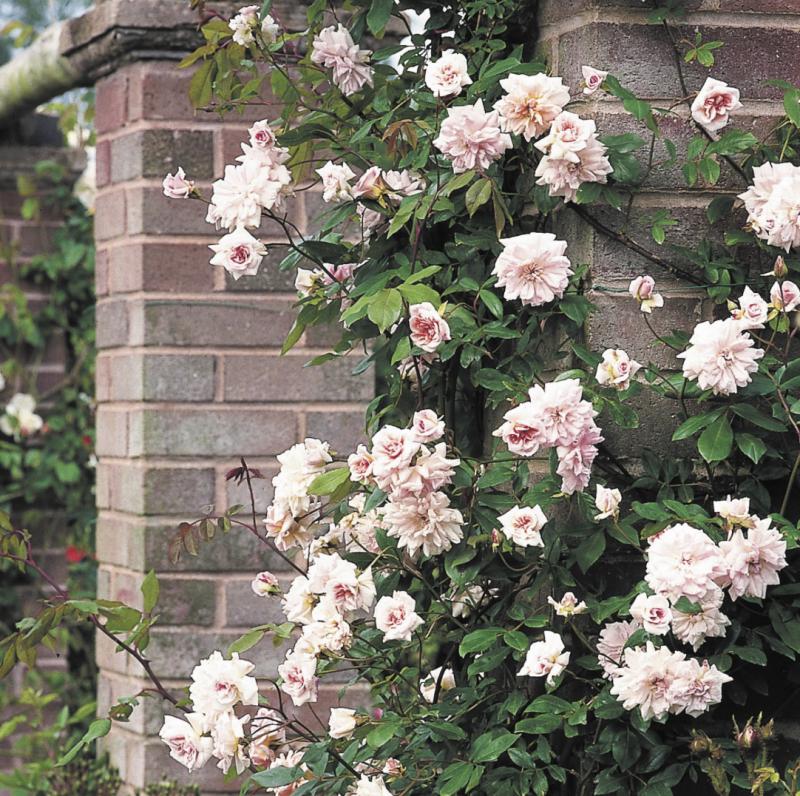Rules are meant to be broken. Most gardeners know that as a rule, roses are fussy, need lots of attention, and secret formulas for fertilizer that would put any alchemist to shame.
Then there is a a rose that seems to thrive on neglect, live forever, and bloom its head off with delicate, perfectly formed tiny buds, and a sweet fragrance. The Cécile Brünner climbing rose has small double flowers that start out as pointed buds before opening into flattened pom-poms.
Dating back to 1881, Cecile Brunner is probably the best known of the old roses. The almost thornless canes can grow up to 30 feet high, so give them a strong wall or trellis to cover.
The tiny roses are under two inches wide fully opened, and are highlighted by healthy sage-green leaves. As the pink color fades from the outer petals it leaves a deep pink center highlighted by pale pink edges. The fragrant, perfectly formed roses are ideal for cutting to make miniature bouquets. As an old-time rose, Cecile Brunner is popular in cottage gardens.
Climbing Cecile Brunner is a long-lived polyantha rose variety that grows so incredibly that it can cover a cottage or small house.
These carefree roses attract butterflies and pollinator bees.Try planting other flowers among the roses, such as Eastern Snowball (Viburnum), Peony (Paeonia) and Salvia (Salvia). Catmint (Nepeta) with its feathery bluish-gray and purple flowers contrasts nicely with Cecile Brunner's delicate pink roses.
Cecile Brunner climbing rose easily grows in average soil as long as it is well-drained. While they thrive even in poor soil, for best results put them in rich soil, high in organic matter such as compost. Avoid planting in wet areas which can cause root rot. Choose a spot with full sun or light shade that gets at least six hours of direct sunlight daily. Water your newly planted roses regularly the first year while they establish their deep roots. After the first year, you only have to water during droughts or when it is very hot and dry.
You can feed Cecile Brunner climbing roses with any good organic fertilizer in early spring before new growth begins. Try using bone meal, fish emulsion and compost tea. Be careful with chemical fertilizers, as they can burn the roots and even kill rose bushes if overused.
A good mulch several inches thick will not only hold down weeds, but keep the roots cool and give you healthier rose bushes. You can mulch with decomposed pine bark, leaves, or straw.
Like many old roses, Cecile Brunner is virtually trouble-free and disease resistant. Control inspect pests by releasing ladybugs and praying mantises into the garden.
While many modern roses need a strict regimen of pruning, most old roses get by fine with little or no pruning at all. Because roses bloom more heavily along a horizontal cane than an upright one, try running your Cecile Brunner climbing roses along the top of a fence or wall.
So as a rule, roses can be finicky and hard to grow well, but plant the old-fashioned Cecile Brunner climbing rose and you will have a carefree treasure that comes back year after year with little fuss. Rules are meant to be broken.



















































